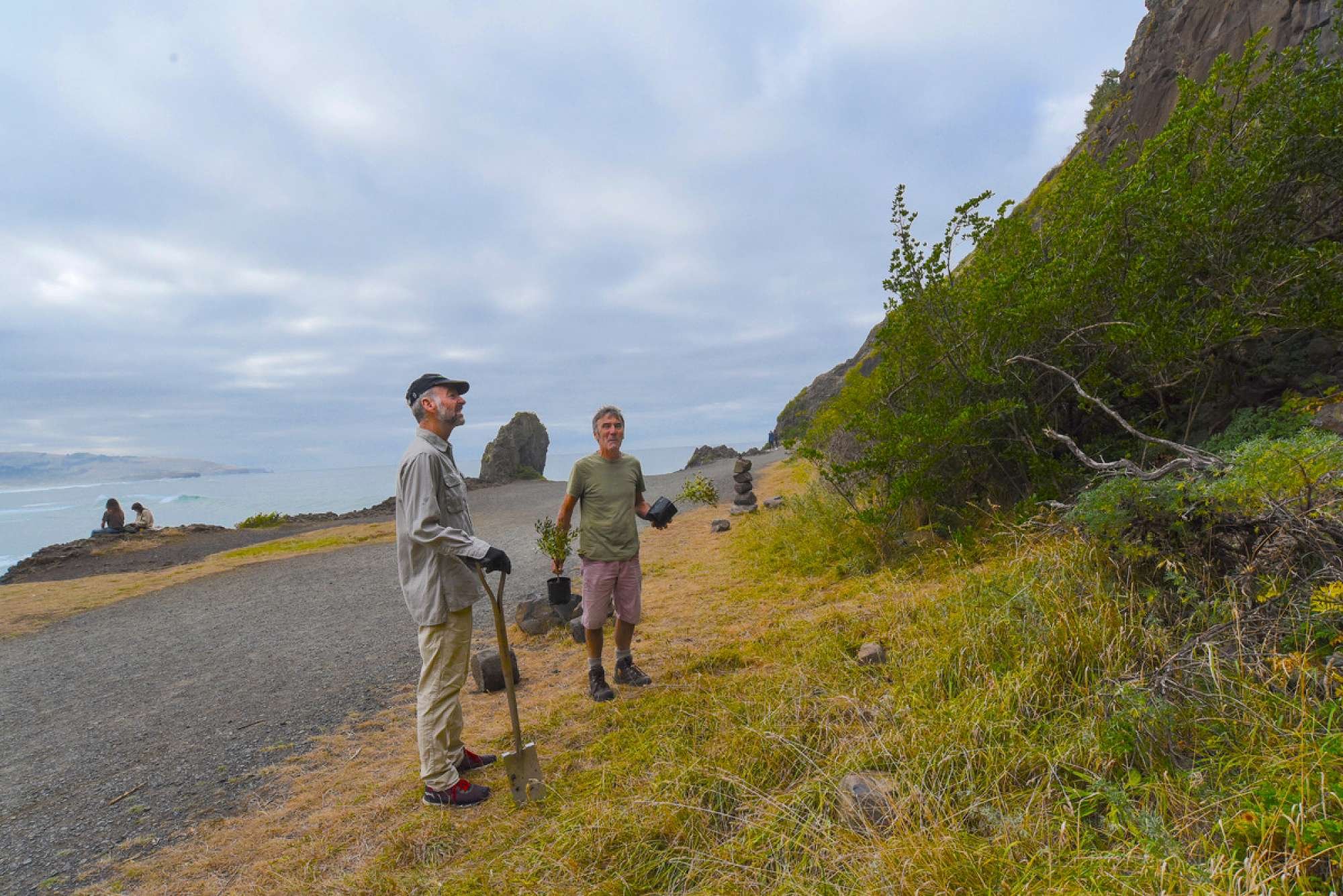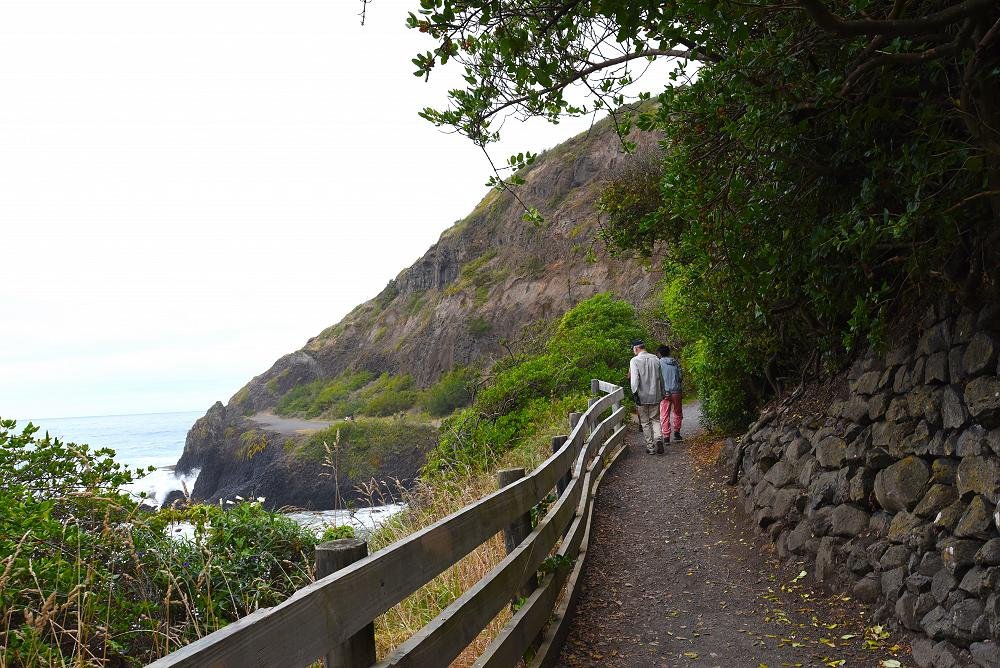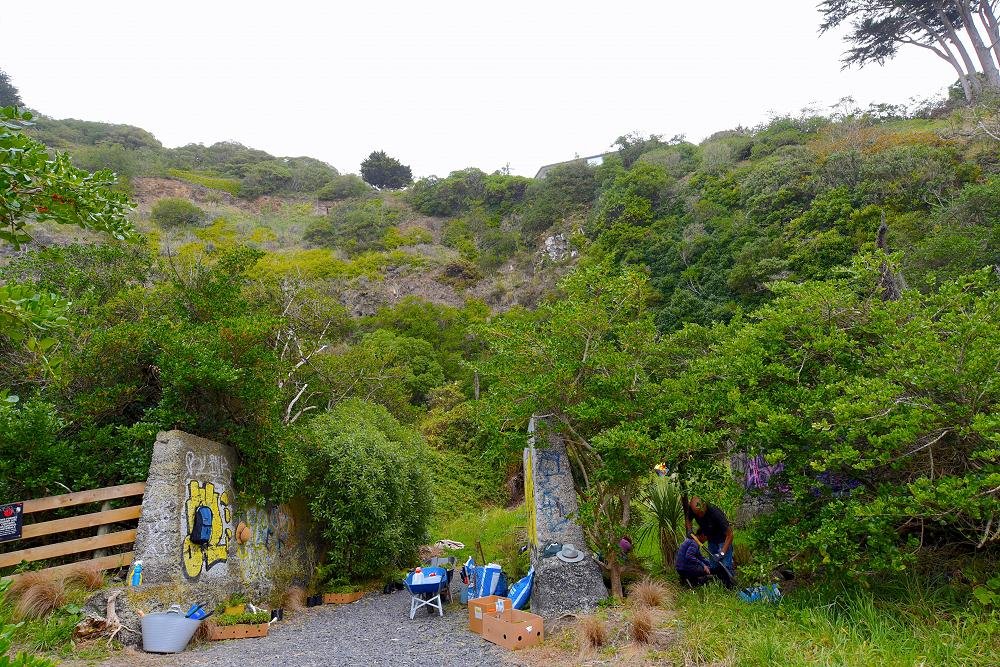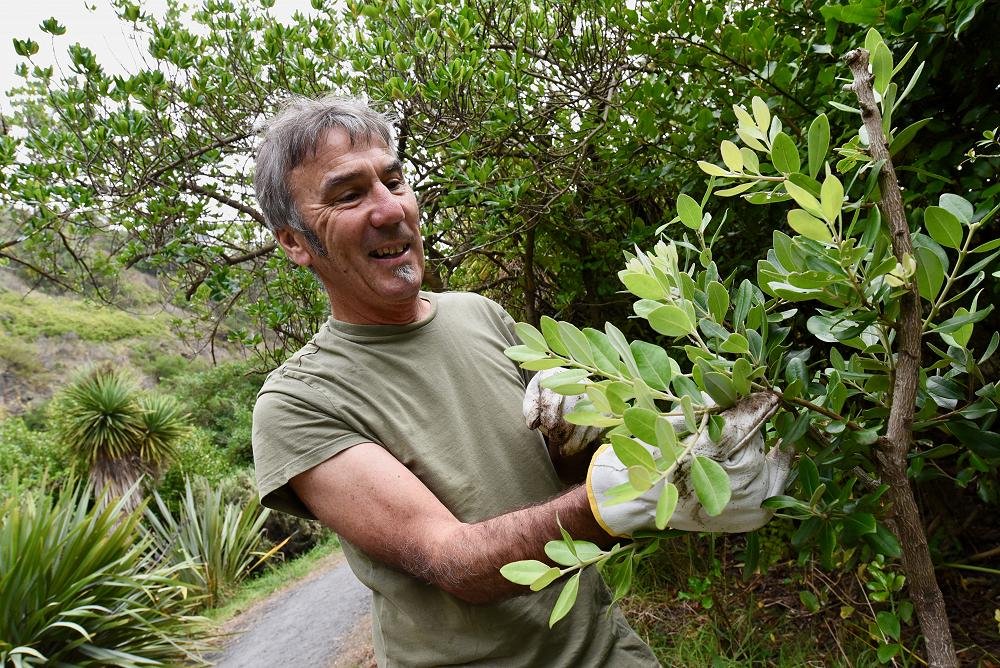Whakahekerau – Second Beach
Wild Dunedin — Apr 12, 2022
It’s peaceful here on this stony strip of land that runs along between two sets of cliffs. On the right the towering rock wall where there was a quarry is now topped with houses with the best views in town. And down to the left a lower cliff leads to a rocky beach, softened by gleaming bundles of kelp, and often pounded by the surf, where in spite of its beauty and drama, and the possibility of treasures to be found, no-one is ever seen.
Jon Moore and Steve King are part of Whakahekerau – Second Beach Ecology Action.
Whakahekerau – Second Beach Ecology Action want to share the love and tell people about their mahi and the history of the area.
Second Beach - enjoy a peaceful track of regenerating forest right by the sea thanks to a group of volunteers. Image by: Izumi Schmidt Uchida
People walk and talk on the wide path, with dogs and coffees and children, taking in the spray from the surf, steering clear of the edge, and revelling in the wildness of this secret spot.
The loading dock from the former quarry on Second Beach track. Image by: Izumi Schmidt Uchida
Since lockdown early in 2020 young native plants with protective covers have started to appear beside the path and in the shelter of the big cliff. And if you’re walking here on one of the monthly work days you’ll see a group of happy people busily planting or weeding or watering, quietly discussing their plans and the progress of their rewilding project.
Whakahekerau – Second Beach Ecology Action is an informal group of people from St Clair and further afield who share a love of this place and a desire to add some well-chosen native plants and trees to the tangle of random vegetation that has established here.
It’s rocky so they bring compost, and dry so watering is essential, and since they trapped over 30 possums, the young trees have had a chance to take off. They trap rats as well, and keep an eye out for the birds that will come into the area once the predators are gone. Fantails are constant companions and the odd kererū turns up.
Sean Bolt watering a young plant. Image by: Izumi Schmidt Uchida
Māori established a path around the cliffs and it was a regular route for them. Then in the 1880s when the Russian scare was on and Aotearoa got fortified with big guns all around the coast, there was a gun emplacement high on the cliff above the Salt Water Pool.
But that’s long gone and now Second Beach is a site for recreation and contemplation. Hardly anyone ventures off the path, but if you do you’ll find that the area under the cliff face is surprisingly large and sheltered, and the young plants there are off to a flying start. Bordered by cliffs and with a narrow entrance above the Salt Water Pool, this piece of the whenua is ideally suited to a community rewilding effort.
With the advantage of natural boundaries, a relatively small area, and a microclimate created by the easterly aspect and sheltering rock walls, the challenge of replanting and predator control seems manageable here. They’ve only been going for eighteen months and with new people turning up to share the work, the momentum is building.






